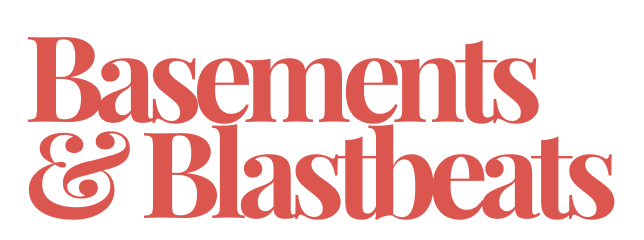Laina Dawes
this is part of a photo series i've been working on since 2011. it is a collection of photographs of badass women involved in metal, hardcore and the borderline metal/punk/avant-guarde worlds. these are the people who make up the music scene. these are my friends.
Meet Laina Dawes, music journalist, author of 'What Are You Doing Here' and concert photographer.
tell me about the conference you recently did.
LD: I recently presented at the Metal & Marginalization Symposium which took place at the University of York in the UK, but I Skyped my presentation in from Brooklyn. My presentation was entitled, "The Music or the Message? A contemporary analysis of racism, anti-semitism and misogyny in the extreme music scenes." By using my book as a jump-off point, I talked about the difficulty in navigating the metal scene when there are issues with artists who have expressed racism, Anti-Semitisim, homophobia and misogyny within both the live performance and within the lyrical content and imagery via the cover art. I wrote about my personal experiences and the experiences from black women involved in not only the metal scene, but also the hardcore and punk scenes in my book, but there has been quite a lot of discussion since the book was released a year ago. It seems like the question: "do you or should you support and artist based on their music, or take their politics into consideration when listening / purchasing their music or going to see them perform live?", is something where there is no clear cut answer. Granted, its a personal decision, but we in the metal scene tend to judge each other on whether we do or not. The conversations I've had in the past few months and the blowback in relation to this issue has been extremely disappointing, so I was fortunate enough to talk about my research at this event.
what was your first metal experience?
LD: Discovering KISS at a very early age. I was more enthralled with the imagery than the music at the time, which as a kid, was scary as hell but really exciting. I also loved that they seemed really powerful and intimidating, with were aspects that I desperately wanted to have for myself. Outside of listening to my older sister's ACDC and punk albums, the mainstay for me was Judas Priest, which I got into at 11 or so.
I first talked with you years ago, when you were interviewing for your book. Since then, A LOT has happened. Let’s chat about your book, which I still haven’t read because I’m a slow reader and a TERRIBLE friend. Can you talk about some of the reactions you've had.
LD: Overall, the response has been great - more positive than I imagined, and the amount of reviews and interviews I've done has been incredible. I must say that the metal community - magazines, podcasts, my journalism colleagues - have been BOSS! On the other hand, there has been a small contingent who is angry that the book exists. I've heard from black (as in black people, lol) metal fans who have thought that by talking about the black female experience in metal that I'm somehow making race an issue in an environment when it should be about the music. I've also gotten some feedback from predominately white males who are angry for the same reasons, as though I'm an outsider who is simply trying to take the scene down - which I don't have the ambition, nor the power, to do.
I look at it this way: The extreme, underground metal scene needs as many fans as possible in order to keep it alive. Bands need fans to buy the albums, buy merch, pay to go see them perform live and more importantly, spread the word. Race IS an issue in relation to making those things a reality for a number of people. I've talked to a number of young black people and people from other ethnicities both before and after the book was published who are afraid to support their favourite bands in a live environment because they are afraid that they are going to be racially harassed. Because we live in an environment in which everyone has access via the Internet or through other forms of media to explore a myriad of different musical styles, racism within the scene - and the book is not specifically about racism (which has been a misconception) - doesn't make any sense from both a cultural and economic perspective. Why not shed light on it to make it as inclusive as possible? I'm a lifer in the scene. I'm not going anywhere.
Will there have to be a part two?
LD: I hope so. I have a couple of ideas but graduate school is currently killing me.
Now that you are FINALLY in NYC, what are some of your favorite places to spend time and money?
LD: Honestly? I've been hibernating, just trying to keep my head above water with my course work, my school office gig and my freelance music writing assignments. However, Saint Vitus is my go-to venue, as the bands they have playing there are great, and it's a pretty chill vibe. I love Brooklyn, though, and I love to walk around and explore the various neighbourhoods and cheap take-out places. The diversity here is wonderful but the gentrification is insane! I also plan to get back into tourist mode during the summer months and get out other parts of the city.
On Monday May 12th, you can catch Laina taking part in a panel discussion after the screening of the documentary 'Rock, Rage and Self-Defense: An Oral History of Seattle's Home Alive' at the Spectacle Theater in Brooklyn.
Some links:
http://www.bazillionpoints.com/shop/black-women-in-heavy-metal/
http://youtu.be/BIJouR73Jr0



